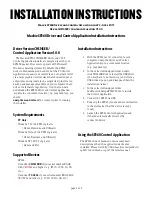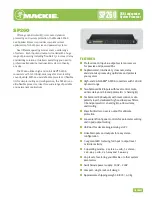
R8C/18 Group, R8C/19 Group
17. Flash Memory Version
Rev.1.30
Apr 14, 2006
Page 198 of 233
REJ09B0222-0130
17.5.1.1
Example of Circuit Application in the Standard Serial I/O Mode
Figure 17.17 shows an example of Pin Processing in Standard Serial I/O Mode 2, and Figure 17.18
shows Pin Processing in Standard Serial I/O Mode 3. Since the controlled pins vary depending on the
programmer, refer to the manual of your serial programmer for details.
Figure 17.17
Pin Processing in Standard Serial I/O Mode 2
Figure 17.18
Pin Processing in Standard Serial I/O Mode 3
(1) In this example, modes are switched between single-chip mode and standard
serial I/O mode by controlling the MODE input with a switch.
(2) Connecting an oscillator is necessary. Set the main clock frequency to
between 1 MHz and 20 MHz. Refer to
Appendix 2.1 Connection Example
with M16C Flash Starter (M3A-0806)
.
MCU
TXD
RXD
Data output
Data input
MODE
(1) Controlled pins and external circuits vary depending on the programmer.
Refer to the programmer manual for details.
(2) In this example, modes are switched between single-chip mode and
standard serial I/O mode by connecting a programmer.
(3) When operating with the on-chip oscillator clock, it is not necessary to
connection oscillating circuit.
MCU
MODE
RESET
Userr reset signal
MODE
I/O
Reset input
















































